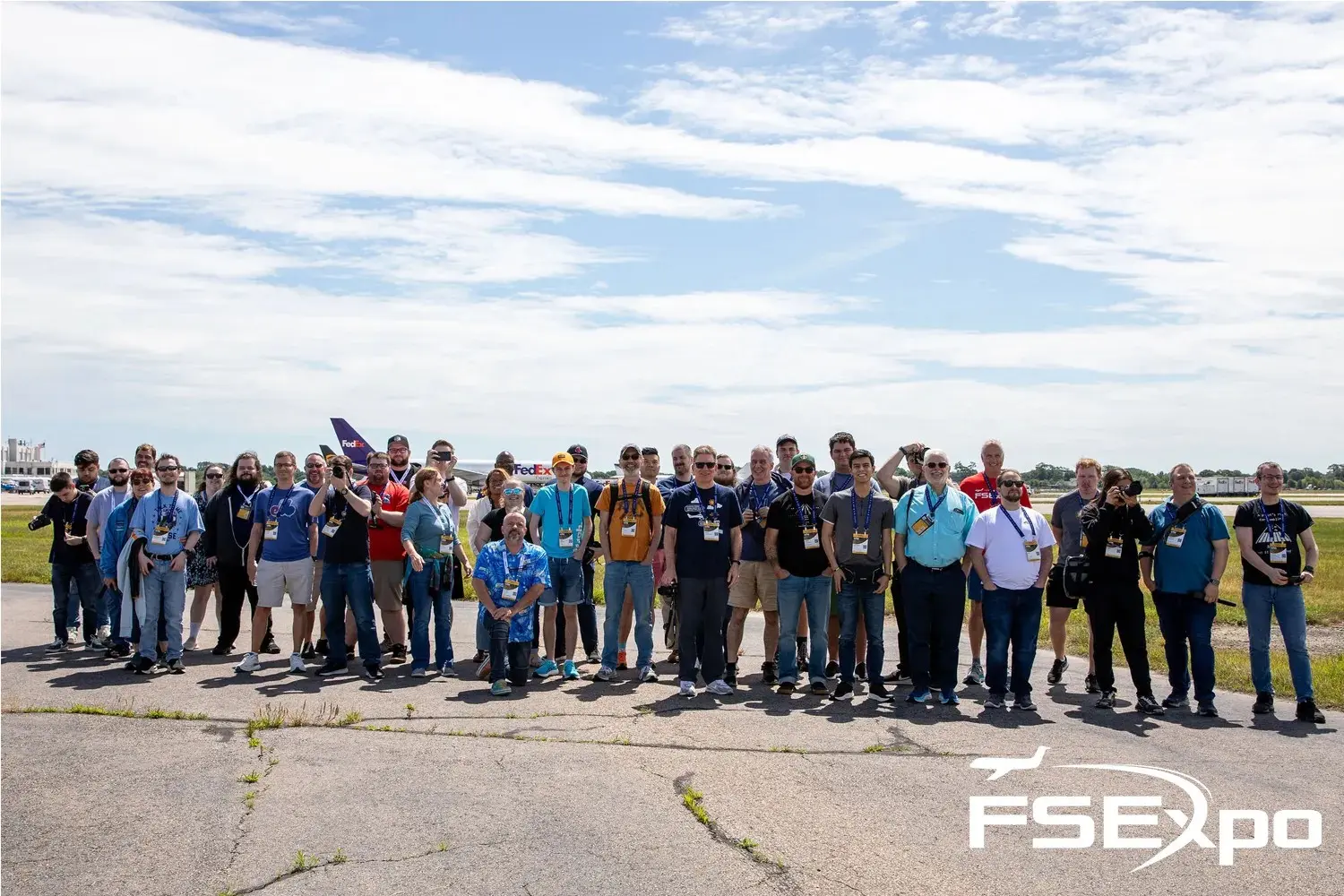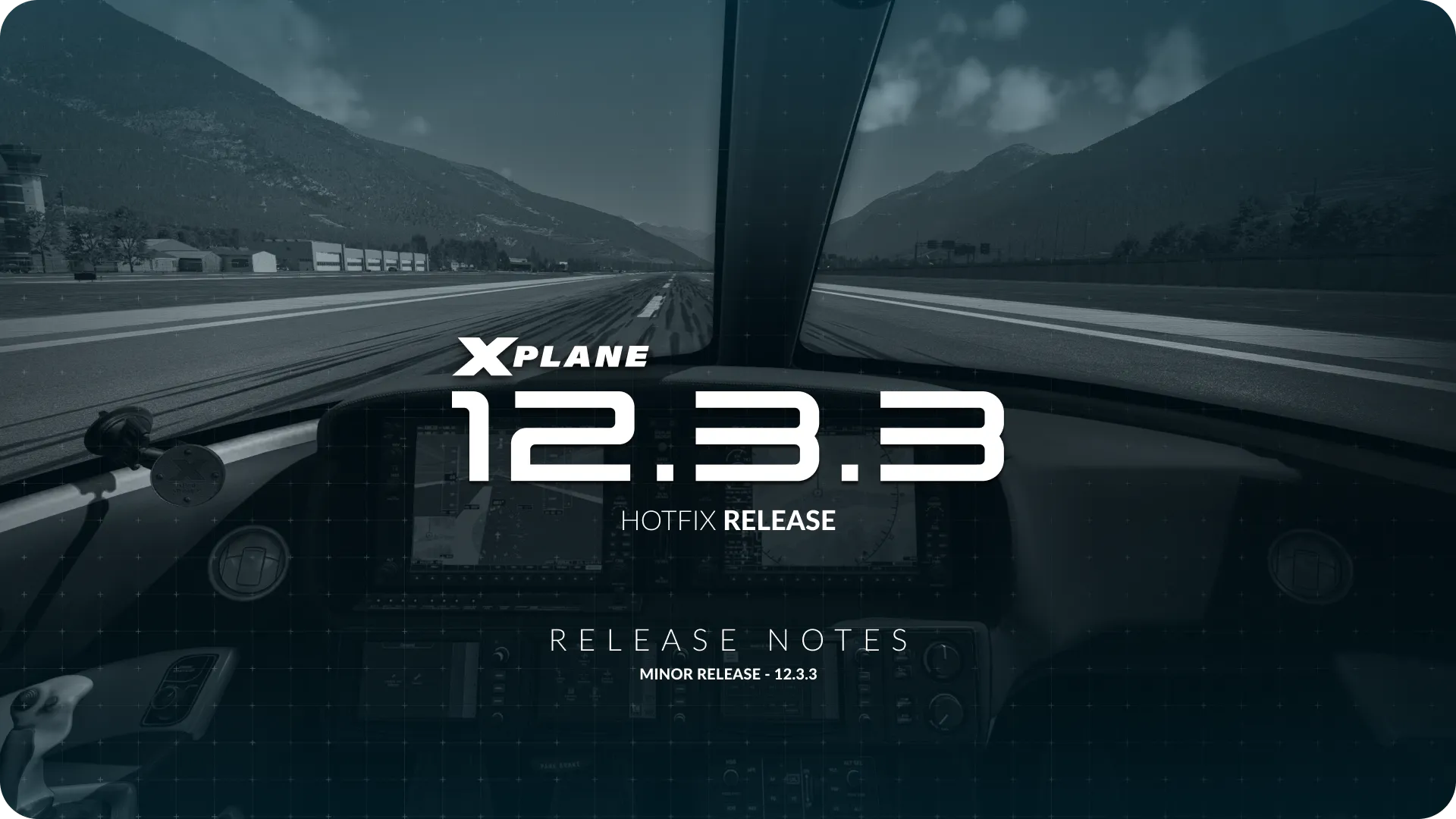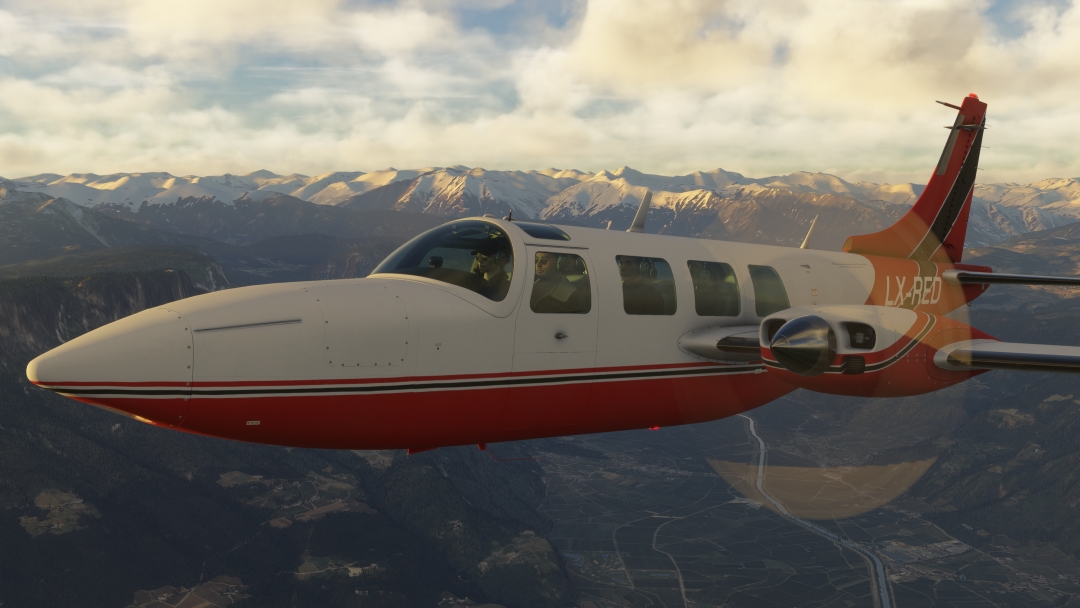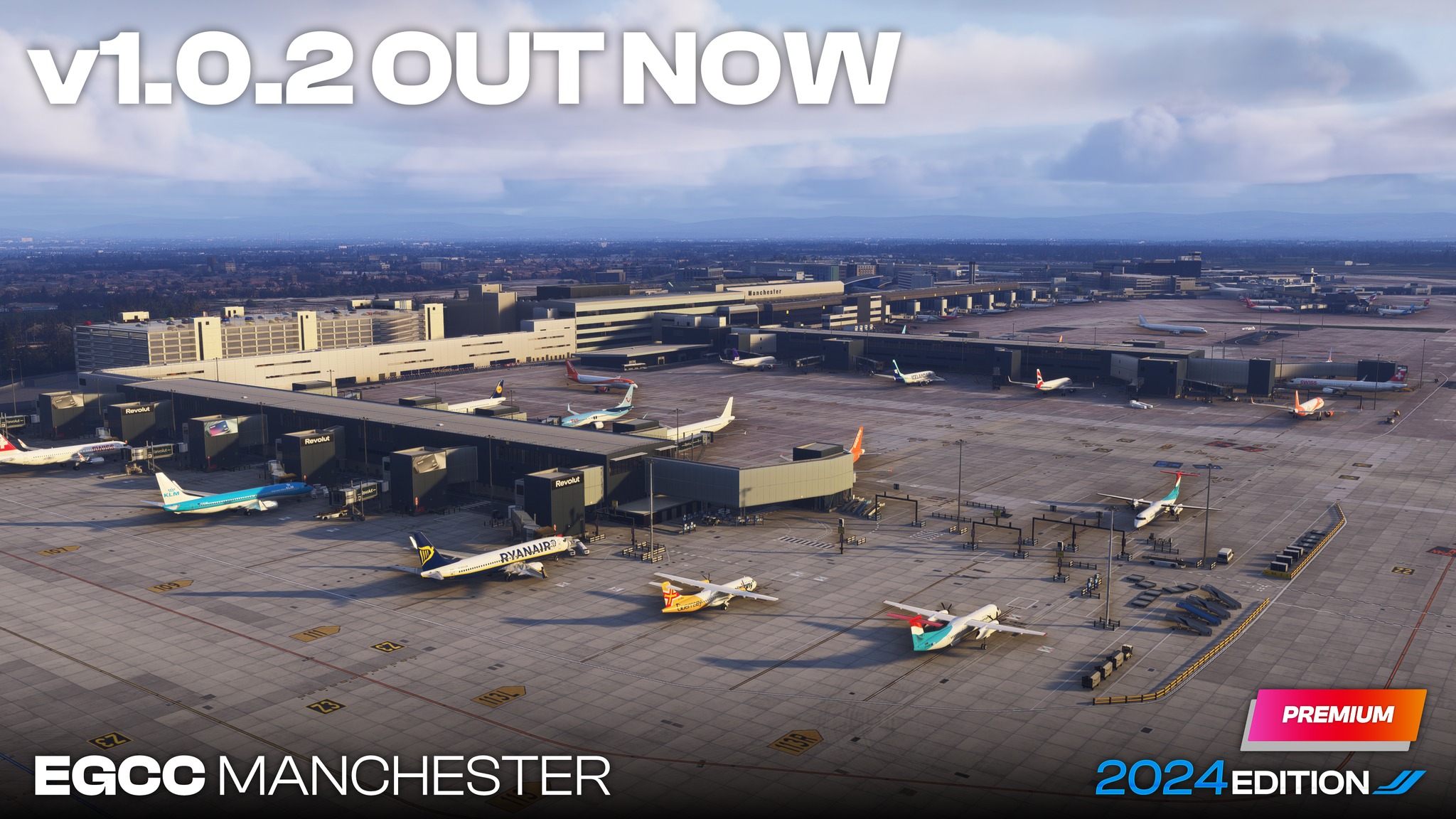A Recap of Laminar Research's Flight Sim Association Webinar
Note: Just a small cry for forgiveness: it's nearly 3am, nobody else is available to cover this, and I've work tomorrow morning too. There may or may not be any grammatical errors, I'll jump back here to fix whatever feedback is provided. Thank's for tuning in!
Note 2: Thanks to commenter "Urgent Siesta" for clarification pointers which is now incorperated into this article.
Laminar Research has just finished a webinar session with Flight Sim Association, detailing what’s to expect for the future of X-Plane, and a brief outline of when to expect the announcement and details of a future X-Plane version. Bear with us as this will be a rather long read!


Hosted by Evan, the conversation began with Marty Arant, Laminar’s PR head, answering some general questions about X-Plane and the current state of the simulator. The majority of the Webinar consists of a thorough peek at Laminar’s plans for the future version of X-Plane.


Prior to discussing the details of the future, Austin hops in to take a walk through memory lane; where Meyer stated that X-Plane was created because Austin needed to maintain instrument currency and a suitable add-on did not exist at the time. So he built his simulator such that ANY aircraft could be modelled with the focus on accurately replicating.A brief mention of X-Plane’s customer circles were mentioned; X-Plane is a major piece of software in flight sim enthusiast circles across education institutions, and full flight sim motion simulator companies - Austin remarked that Boeing even uses X-Plane, though they don’t know what they use it for (they only knew through the order book).

The discussion then shifted to the main point of attraction: the future of X-Plane. Austin gave a brief overview of what they’ve been working on with global scenery assets, where a whole new suite of scenery assets were developed for introduction in the future simulator; from new buildings and autogen, to a significant revamped groundwork assets, this includes pavement edge rendering (scenery pundits may breathe a sigh of relief here). The word “next generation” and “future” begins to be thrown around a lot from here.


Austin then digressed to discussing his involvement with a new startup called Beta, who is developing a VTOL electric powered air vehicle that is not a flying car per se; with capabilities to eliminate the use of fuel and runways, and the ability to drive on roads. Elaborating on the why; Austin explains on the next generation of aviation, and how aviation itself is changing, where X-Plane's flight-modelling advantage would be able to replicate the flights of these new vehicles without much revamp of the simulator specifically for these new kinds of aircraft.

The pair then shifted back to the main discussion points by beginning the preview of the next generation vegetation system, featuring fully 3d trees with seasonal rendering driven through interpolated shaders (more on this further down the article):
The entire development of this new version of X-Plane has primarily been remote, due to the ongoing COVID-19 pandemic. The team has a weekly check-in session where it's an opportunity for each member of the team to showcase what has been worked on in the past few days.


--
Q&A
What followed is a series of questions from the viewers of the Webinar, where Evan picked from the live chat for Austin to answer.
WHAT IS THIS NEW X-PLANE CALLED:
One of the first questions addressed what the future X-Plane would be called, to which Austin remarked that version numbering is not the most important thing, the team is razor focused on building the next generation of X-Plane; the future simulator engine so to speak, marketing related information like version numbering would come at a later date, which may be revealed at FSExpo in September (more on this below). Immediate improvements towards the existing default fleet includes Philippe Ringler (who was known for the FlightFactor 777) completing improvement work on the 737 avionics and nav simulation (this was noted near the end of the Webinar).
TREES & VEGETATION:
Another question pondered whether the vegetation preview is an affirmation that Seasons are coming, to which Austin responded with a resounding yes; seasons will be available (which is a highly requested feature but it’s finally implemented), the team took a unique approach to it whereas instead of relying on art assets like textures to render, the team wrote shaders to interpolate and randomise tree rendering to bring variable tree weathering. This seasonal rendering is dynamic and is driven by said shadering system, to which the shaders are controlled by locale data (latitude and time). As a footnote, the preview video is already obsolete as it’s a snapshot of a much earlier version.
CLOUDS AND WEATHER:
A question addressing volumetric clouds and when could it be expected: Austin responded with a confirmation that they are indeed working on volumetric clouds internally, where he himself is coding the clouds for the past few weeks and is flying with it in his X-Plane copy. One major quality of this new cloud (or weather system in general) is to capture the very experience of flying within a cloud system, the feeling of insignificance when navigating through the cloudscape. It would be rebuilt to replicate this experience, one which couldn't be simulated through the current cloud engine with its billboard based particle system.
ICING SIMULATION:
For questions surrounding icing simulation, Austin noted that it is physically simulated albeit there’s no visual implementation. Austin himself researches icing and its impact on aircraft behaviour, and this research informs the direction and development of X-Plane’s flight modelling. They’ll have artists who could address visual replication of icing.
LIVE STREAMED SCENERY:
As far as approach to scenery rendering akin to the latest MSFS, Austin finds disdain with this approach as it does not accurately replicate the real world - it is a decent way to replicate the real world from above, but things fall apart the moment you go back down to earth. Austin pointed out how trees and vehicles become near indecipherable blobs on the ground, which makes for a surreal Salvadore Dali experience.
Austin puts it bluntly: crisp, clean, modelled buildings and trees, a believable and plausible world trumps an approach where approximate data driven, streamed scenery is relied upon, a set of high quality art assets that are intelligently applied to construct a believable world will produce more believable results.
Austin concludes on this part with a statement which he believes that different thinking drives a different approach, which in turn delivers differentiated products that benefit the consumer in choice.
PERFORMANCE & VR:
Questions addressing Performance and VR in the future X-Plane is met with lukewarm optimism on potential improvements in performance. The new rendering features realistically would not make the future X-Plane run better on older machines, but the way it is written will inherently make the best use of your hardware. Beginning with the use of modern graphic APIs such as Vulkan and Apple’s Metal, there will be no more openGL versions shipped.
To expand on these new rendering capabilities, Austin elaborates that Ben Supnik took to measure the amount of watts per square meter from the sun in an airplane in real life to replicate the physically based lighting. Ben built the next generation lighting engine to not only look better, but is constructed with the approach to simulate the actual fundamental physics of lighting.
TERRAIN MESH EDITING:
For developers pondering whether terraforming will no longer be a trip through hell, sorry to disappoint, but Austin said that it’s always been second or third on their list, it’s just that time will tell. It’s not the utmost priority - but the team is working on seeing how to make it work with their approach to scenery rendering.
BACKWARDS COMPATIBILITY:
When it comes to bringing backwards compatibility with existing 3rd party add-ons, the answer is mostly yes.
MULTIPLAYER:
MMO for next gen desktop X-Plane is a “yes, but no” response. Austin envisioned a future where, when you get online, you get connected to all other copies of X-Plane, regardless whether it’s mobile or desktop, akin to Minecraft Bedrock/Windows 10. On that approach, this would pave the way to enable MMO functionality on desktop. Austin personally wants to build a virtual world where all X-Plane users, regardless of the X-Plane edition and device, can connect and fly together.
SOUND IMPROVEMENTS:
Daniella Careri, Laminar’s main sound guru, will see the extensive fruits of her labor appear on the next X-Plane version. By sounds, the team does not only mention aircraft, but the environment too. The future previews may showcase Daniela’s work, “sounds are something easy to forget” but they are committed to deliver a stunning sound environment, brought to you by Daniela.
ATC IMPROVEMENTS:
LR recruited a new hire that will solely be working on overhauling the ATC. Jumping into gossip territory, Austin didn't really like Chris Serio’s work on ATC, Austin rewrote it himself and showed it to clients but they didn't really Austin's work either and settled with Chris’ ATC simulation. Austin himself still wasn't satisfied, which drove him to work ono the ATC - and that culminated in the hiring of a dedicated person just for ATC.
Austin noted on why he thinks the current system falters: AI text does not replicate the experience of real communication with ATC in Real Life, so this revamp will attempt to replicate that, by adding the human interaction and nuances of communication within the flying experience on the next generation of X-Plane.
MISCELLANEOUS INQUIRIES:
Will the trees be collidable?
The focus is making X-Plane simulate flight physics well, the team is not focused on making things run into things, “not in my flightplan” as Austin phrases. “I’m here to make a flight simulator, not a crash simulator.”


Is there going to be an a320?
The team has a handful of airplanes that are being worked on behind the scenes, and they want to reveal them in a fun way for the near future, there’s no need to spoil the fun!
Are weather transitions dynamic?
Yes, it has been in the works for the past few weeks, the last time Austin worked on it was late last night! This is a step toward a dynamic world that is the goal of the LR team.
Improvements on air movements: Wind, valleys, mountains, terrain effects in clouds:
Interesting question, Austin remarked. But the team hasn't gone down that far yet. What is being done right now is whenever you enter the weather in the UI, the rendering and simulation is being constructed as accurately as possible - but is being modelled by the NOAA model, which likely may not be able to replicate said features. But this is interesting, and they’ll take note of that.
UI to be worked towards users who aren't tech savvy?
Not a priority, the interface will remain largely the same, Austin replied. They don’t see a huge change down the line, however they will plan to do a minor overhaul of the tools such as PlaneMaker. As a footnote following questions about multi display setup: Austin personally wishes to improve the UX so that users know how to set up properly, including multi display
When would developers receive technical information on the future X-Plane version to kickstart development?
The team hopes to put together something cohesive enough prior to FSExpo to allow developers a chance to begin their migration.
Raindrops on windshields?
A brief statement was given for this: Interacting with the weather is something breathtaking in the future in X-Plane. They repeated: we don’t want to take away the fun. Subsequent teasers may address this, but this is largely a “no comment.” answer.
An online marketplace for X-Plane:
A definite maybe, Austin has a lukewarm stance. Austin wants users to have choice and the marketplace may have stepped on people’s toes. It would be cool, to have something akin to Steam but it definitely is not a priority right now.
Vertebrae
This is not a design by committee simulator, it’s developed primarily by the direction and leadership of Austin, with him taking onboard feedback and pointers with the rest of the team. A simulator that provides state of the art flight-modelling, grounded by a really nice plausible scenery which loads quickly, quick to load and performant. What was previewed at the webinar is a tiny glimpse of what the entire team has been doing on a daily basis for the last two years.
To paraphrase Austin’s comment: X-plane 11 has had a good run, but it is a little dated now - it’s time to turn over a new page. We’re not done with teasers yet, so there is much more to come! Much more details will be revealed at the coming FSExpo on the weekend of September 26 San Diego through an in-person webinar at the expo, the keynote will include the future X-Plane simulator (or what has ben put together by that time) with plans to make development information available to 3rd party developers beforehand, along with pricing and availability.
That’s it for X-Plane and FSA’s webinar. Be sure to check out their other events on their website! Stay tuned for more news on Threshold.
Share this page
COMMENT ADVISORY:
Threshold encourages informed discussion and debate - though this can only happen if all commenters remain civil when voicing their opinions.












